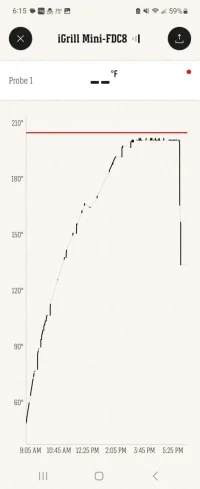Do you know for certain that your cook temperature is 225F. If you are not using a thermometer of known accuracy to check the controller temperature, your cook temperature might even be as low as 200F.
Likewise, if your internal meat probe is not accurate, you might be closer to 212F than you think.
The 160 F temperature that Trager references is called the stall point. It usually happens somewhere between 160-170F. When the protein reaches that temperature, all of the heat produced by the fire is needed to evaporate moisture from the surface of the meat. There is no additional heat available to increase the internal temperature of the protein. Thus, the internal temperature rise will be quite slow. Eventually, the meat will dry out and the temperature will begin rising once again.
When the internal temperature stalls, you have three choices:
1. You can leave the temperature at 225F and wait it out. This can add hours to the cook as you have learned.
2. You can remove the protein from the smoker, wrap it in either butcher paper or heavy duty aluminum foil and put it back in the smoker to finish. The wrapping traps evaporating moisture so that the meat steams inside. When cooking brisket, this is referred to as the Texas crutch. It greatly reduces the time needed to complete the cook. The disadvantage of this method is that the steam inside the wrapper can soften the bark that you have tried to develop during the initial stage of your cook.
3. The last method is to allow the temperature to remain at 225F until the cook reaches the stall. At that point, you can increase the cook temperature to 275F. That provides additional heat that will power through the stall. Once the protein reaches the stall temperature, little or no additional smoke will be absorbed into the meat. Thus, there is no disadvantage to increasing the cook temperature.
The same procedures apply anytime you are cooking a large piece of meat like brisket, pork shoulder, etc. I typically combine steps 2 and 3. I wrap the meat AND increase the cook temperature. That will greatly accelerate the cooking process are cut hours off the cook time.
When cooking any meats, it is important to allow the protein to rest after cooking to allow the juices to redistribute through the meat. For small pieces of meat like a steak or pork chop, a rest of a 10 minutes or so should be sufficient. For a full packer brisket, you should rest it for a couple of hours or more. Many of the brisket pros on the forum will wrap the brisket in foil, wrap it in a towel or small blanket and place it in a picnic cooler so it cools down slowly during several hours of rest. You should always plan for your cook to finish well before serving time to allow for this rest period.
BTW: My daughter and her family live in Stirling Ranch just a few miles SW from your location.









